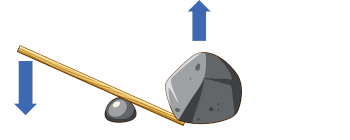A rhombic dodecahedron is not a regular polyhedron, since its twelve identical faces are diamonds. It and the cuboctahedron comprise a pair of dual polyhedra: for each face of one there is a corresponding vertex in the other, and vice versa. This solid appears in nature in honeycombs, where every cell consists of half a rhombic dodecahedron topped by a hexagonal prism. A honeycomb has two layers of parallel cells opening in opposite directions, and the bottom of each cell nests between the bottoms of three cells of the opposite layer. Coupled with the choice of hexagonal prisms, this is relevant for efficient use of beeswax, as the rhombic dodecahedron, like the cube and the truncated octahedron, can tesselate three-dimensional space: multiple copies can be juxtaposed to fill any volume.
Карта мира на ромбическом додекаэдре
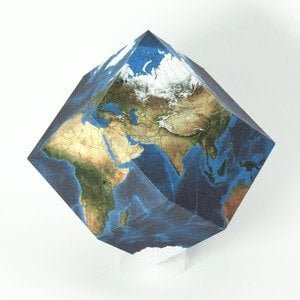
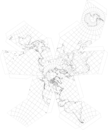
Карта мира на ромбическом додекаэдре. Гномическая проекция. Полюса на плоскостях
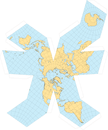
Карта мира на ромбическом додекаэдре. Гномическая проекция. Полюса на плоскостях
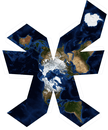
Карта мира на ромбическом додекаэдре. Гномическая проекция. Полюса на плоскостях

